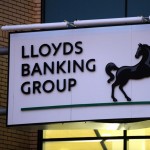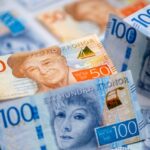Having climbed to daily highs against the US dollar earlier on Friday, due to spurred appetite for riskier assets, as stimulus programs over the globe will likely remain in place, the Aussie subsequently pared its advance.
AUD/USD rose to a session high at 0.9352 at 4:00 GMT, after which consolidation followed at 0.9325. Support was likely to be received at November 14th low, 0.9281, while resistance was to be encountered at November 14th high, 0.9386.
Australian dollar is poised for a fourth consecutive weekly gain against its US peer amid prospects that Federal Reserve Banks Quantitative Easing will continue, while central banks in Europe and Japan may introduce additional easing measures.
Yesterday Fed Chair nominee Janet Yellen said that US economy has showed a certain progress, but still the current rate of unemployment at 7.3% was too high, which implied that labor market and overall economy have been performing far short of their potential. “It’s important not to remove support, especially when the recovery is fragile,” Yellen said in response to a question during her testimony to the Senate Banking Committee in Washington, cited by Bloomberg News.
Yellen also said that bank’s benchmark interest rate, currently at a record zero to 0.25%, would likely remain low even after policymakers embark on a reduction of monthly monetary easing. The Fed has maintained borrowing costs in proximity to zero since December 2008.
At the same time, Bank of Japan policymakers are expected to introduce additional stimulus during the first half of 2014, according to a survey of experts.
Meanwhile, the Reserve Bank of Australia (RBA) is scheduled to release the minutes of its Novembers meeting on policy on November 19th. Banks policymakers decided to maintain the benchmark interest rate at the current record low level of 2.50%, while RBA Governor Glenn Stevens said that the exchange rate of the Aussie was “uncomfortably high.”
Traders saw 11% probability that the central bank will cut interest rates at its meeting in December, according to swaps data compiled by Bloomberg.
The yield on Australian 10-year government bonds remained almost unchanged at 4.20% today, after having touched 4.30% on November 13th, which was the highest level since March 2012.
Elsewhere, the Aussie was gaining against the euro, with EUR/AUD cross down 0.17% on a daily basis to trade at 1.4428 at 9:54 GMT. European Central Bank (ECB) President Mario Draghi has said that banks policymakers “are ready to consider all available instruments”, as the central bank surprised global markets last week, cutting borrowing costs to a new record low level of 0.25% in order to stimulate economic growth in the euro bloc.
AUD/NZD pair was losing 0.13% to trade at 1.1248 at 10:04 GMT.





